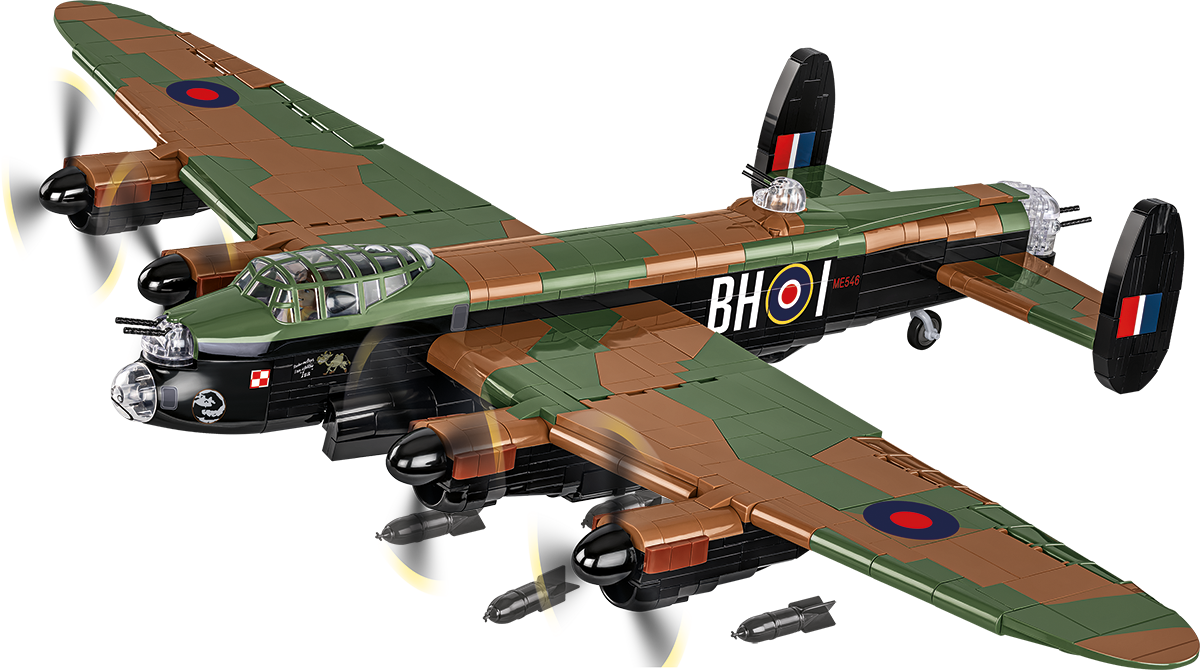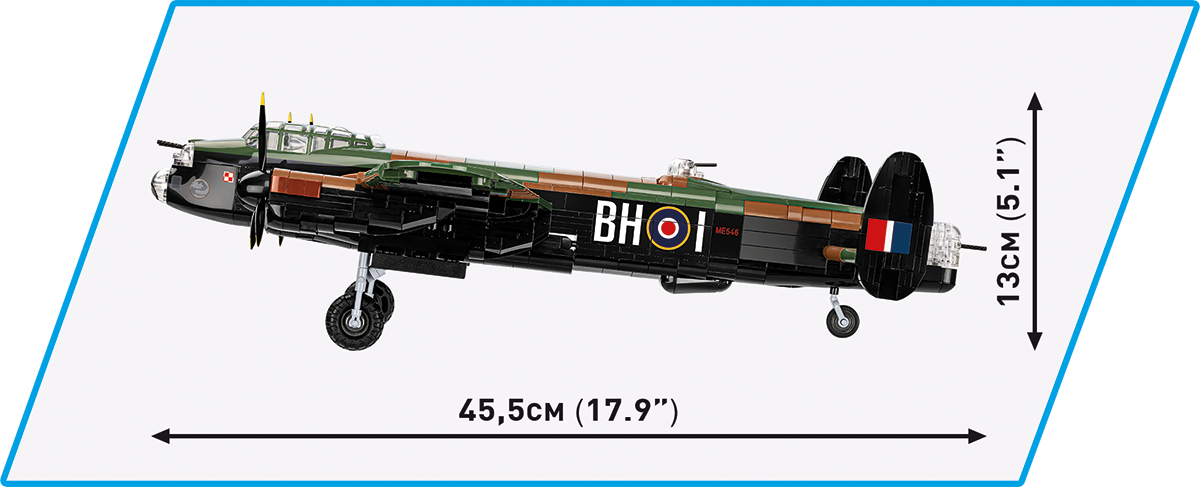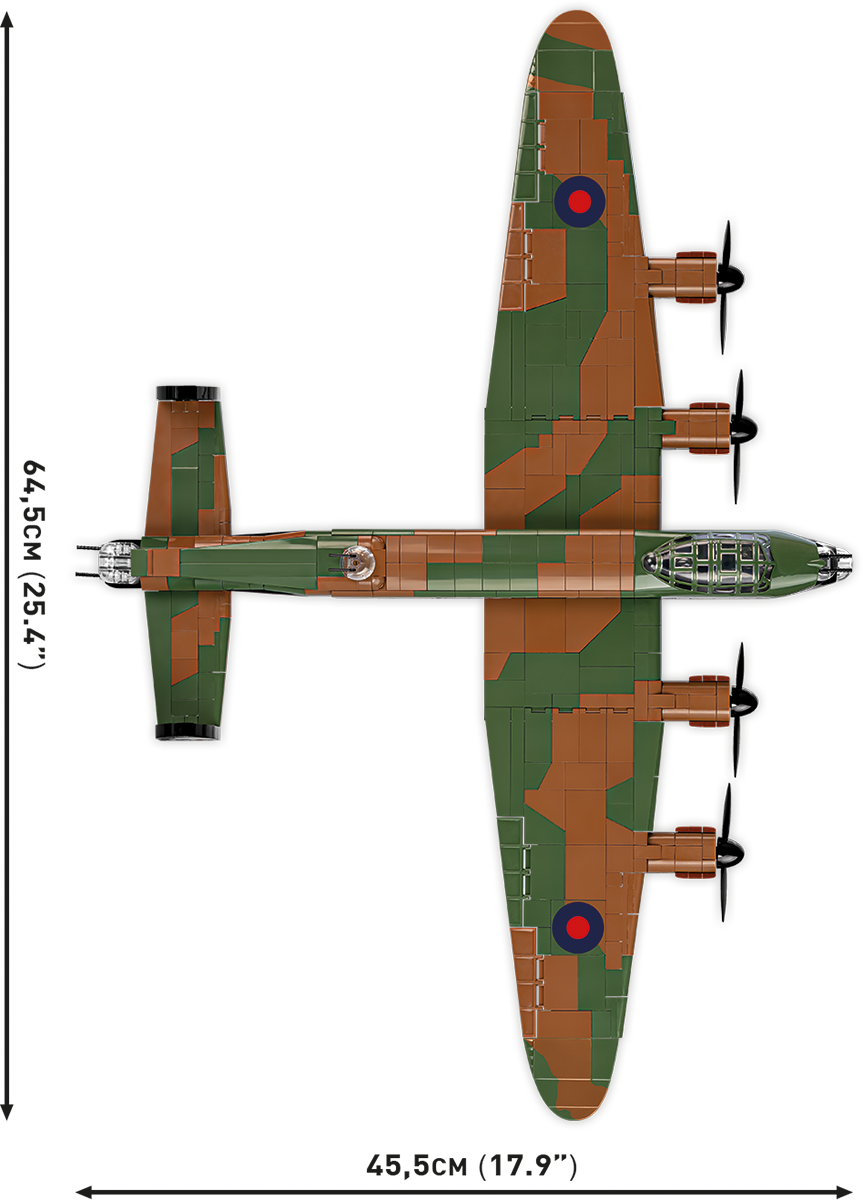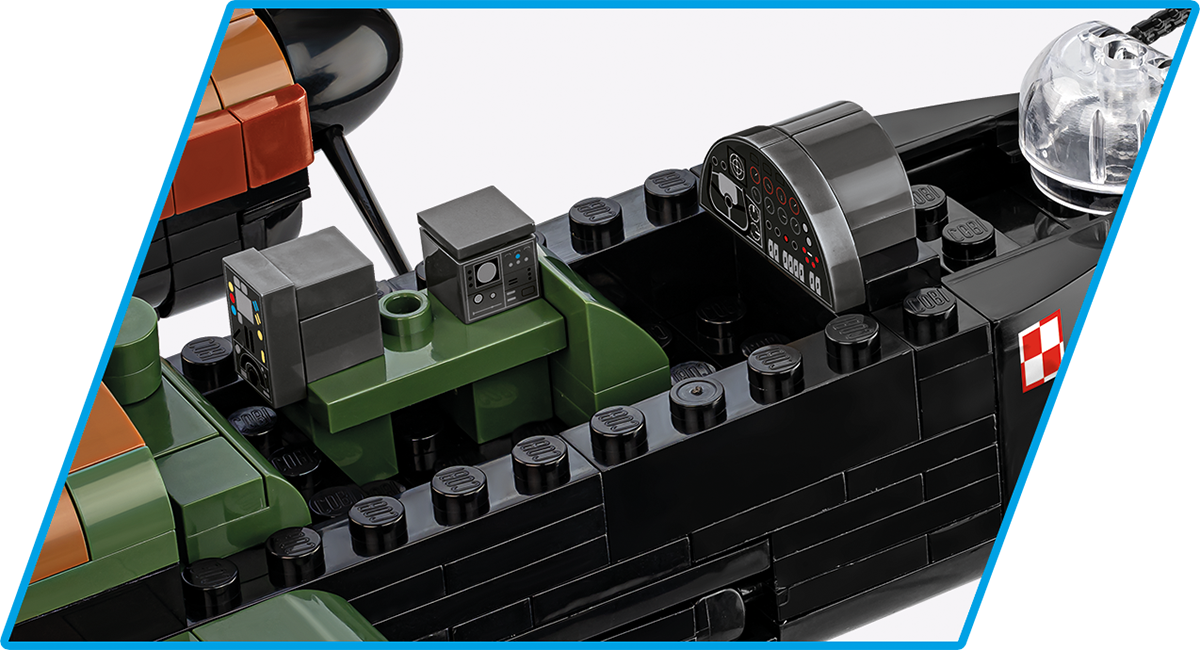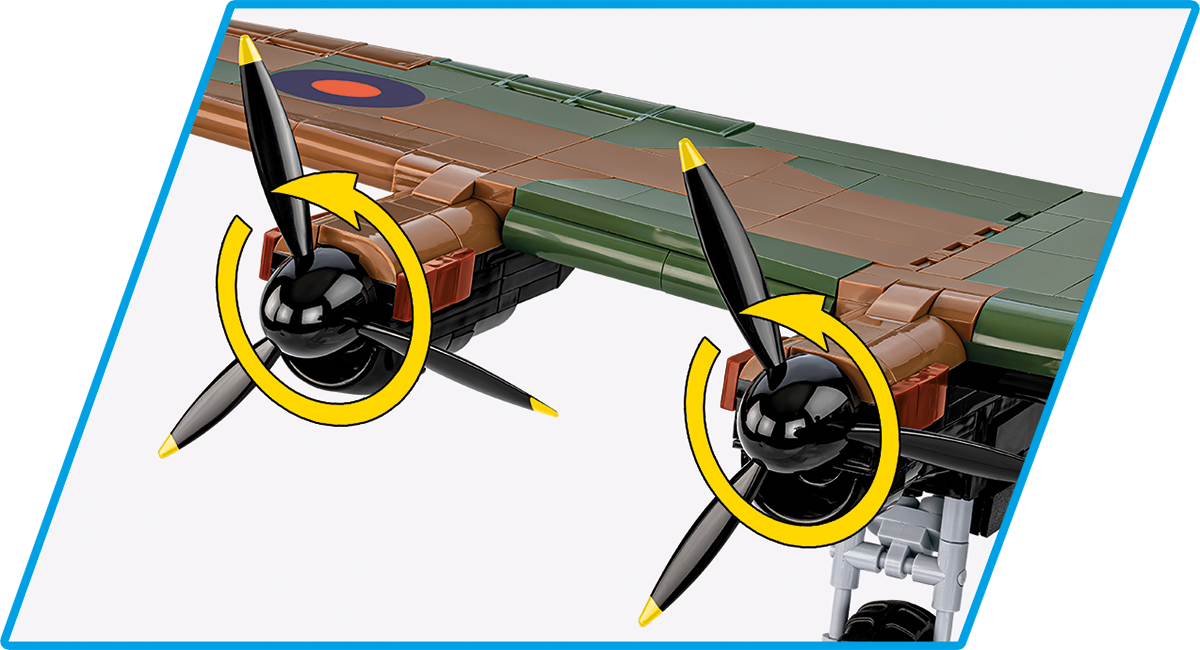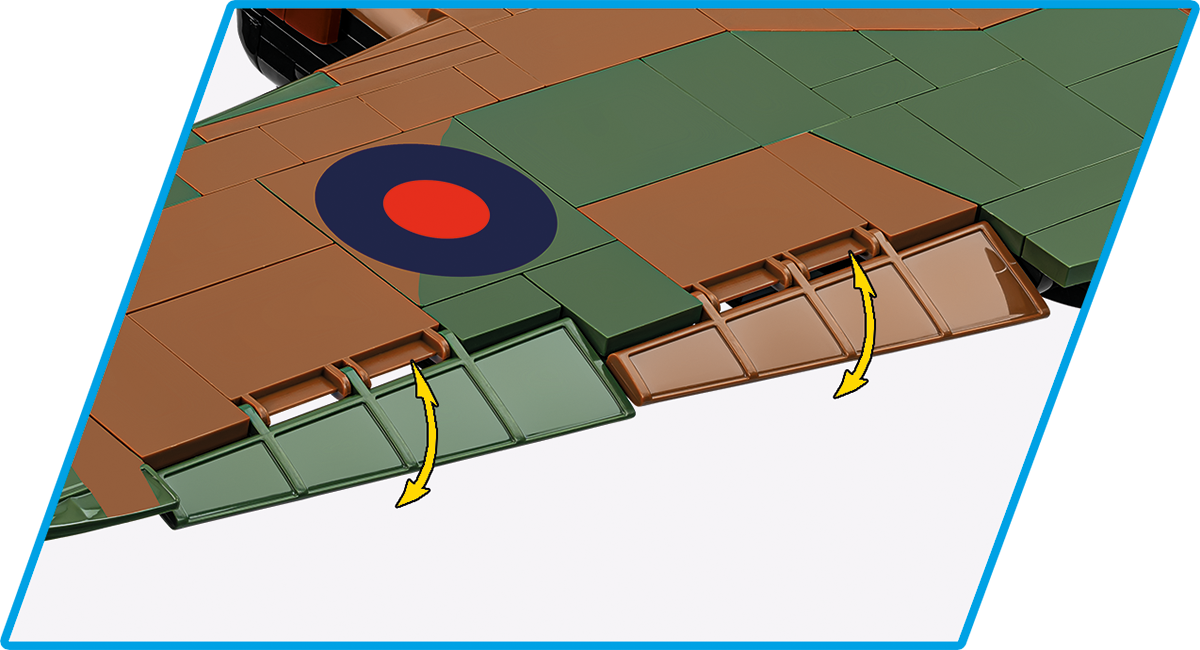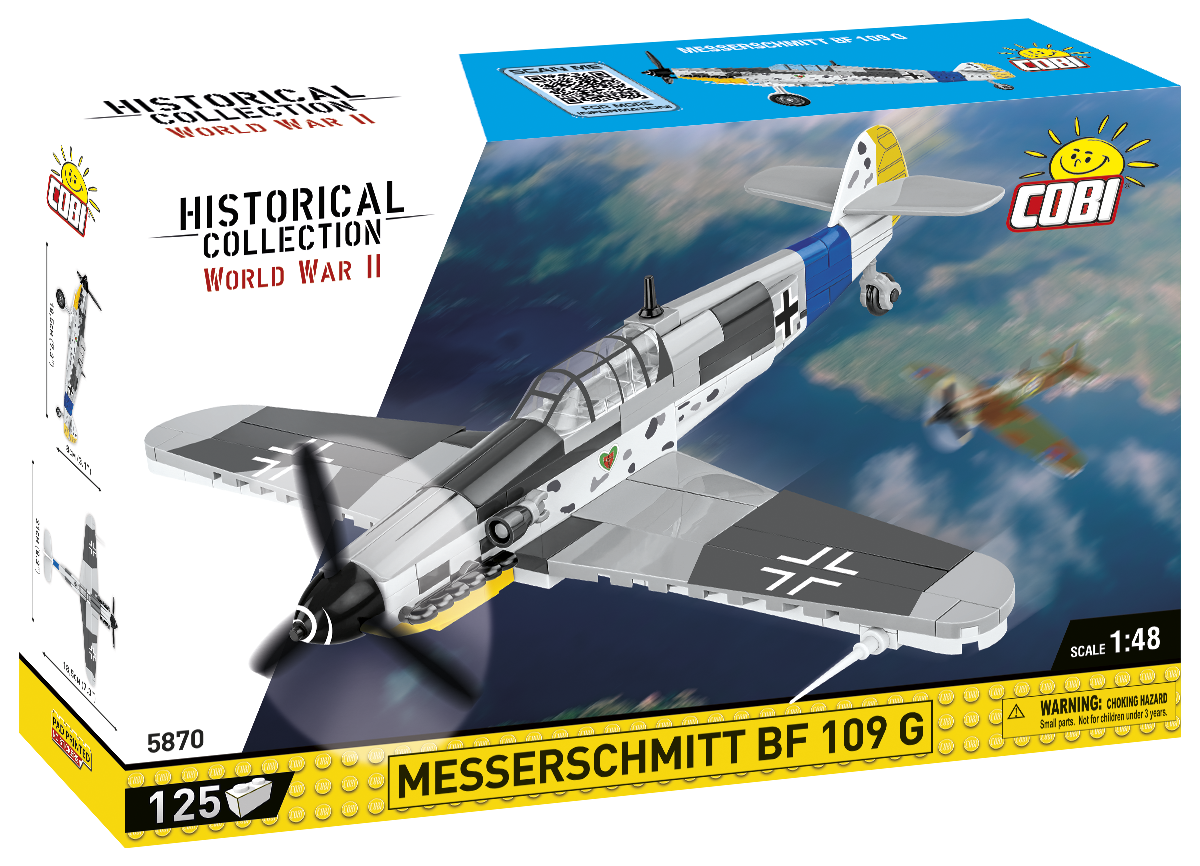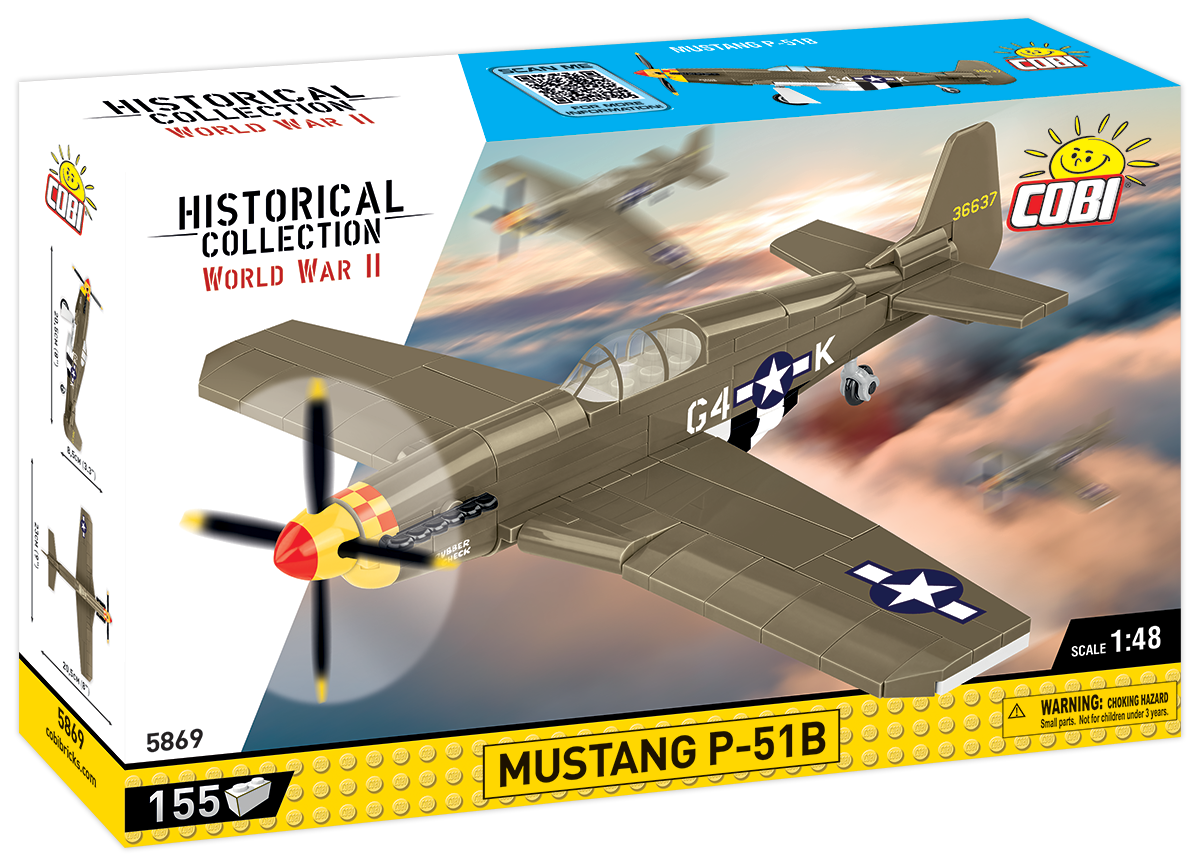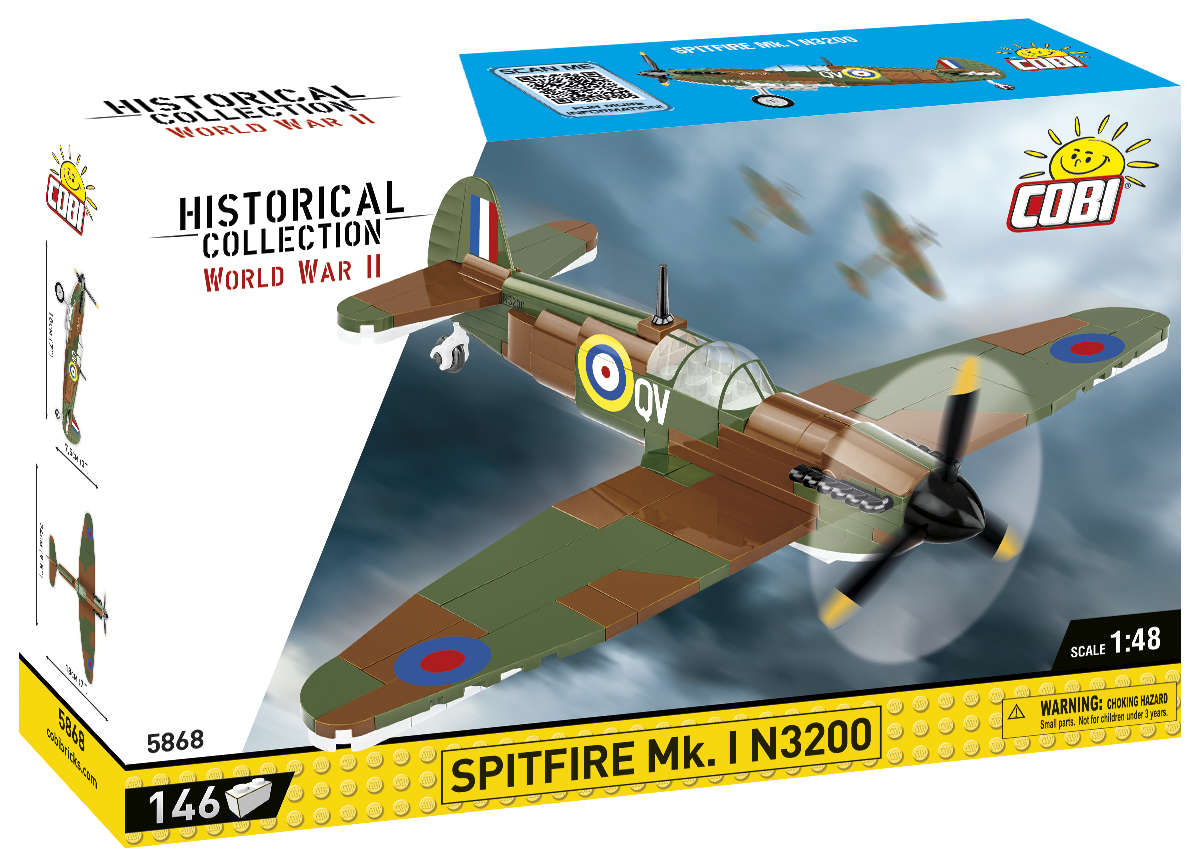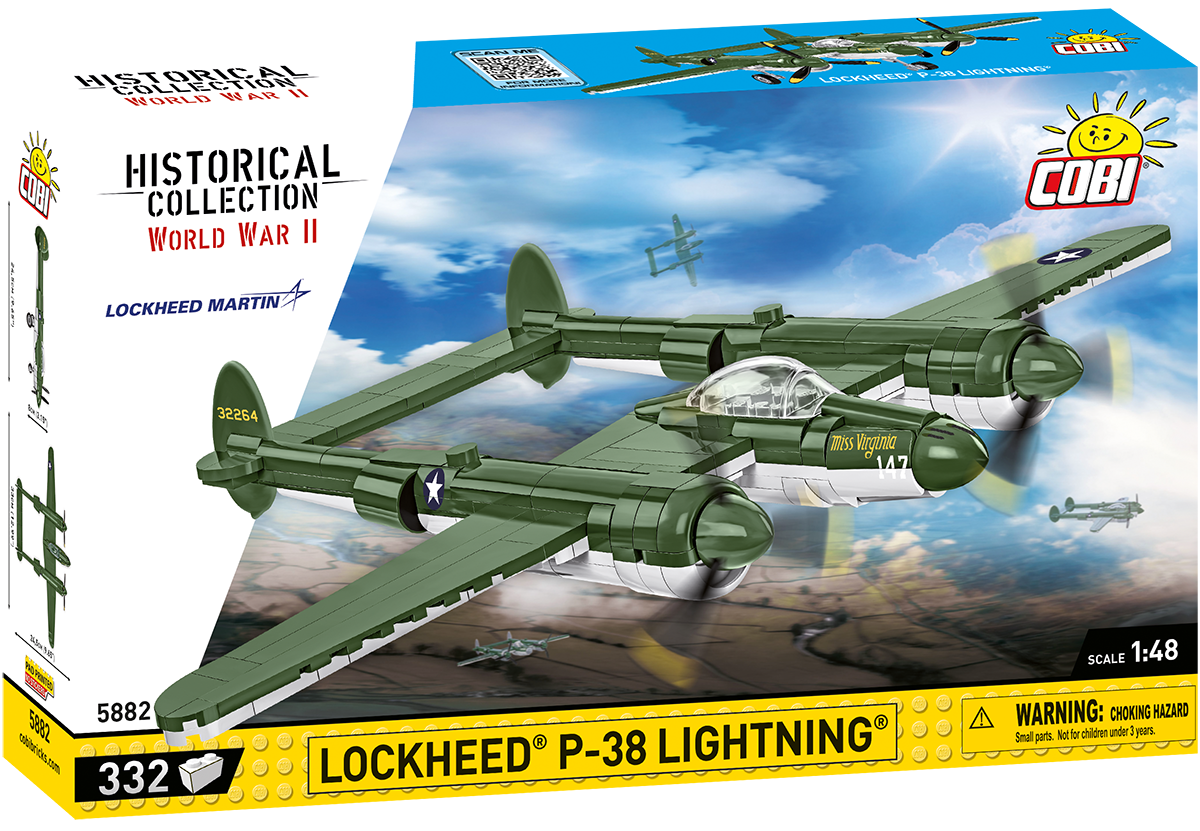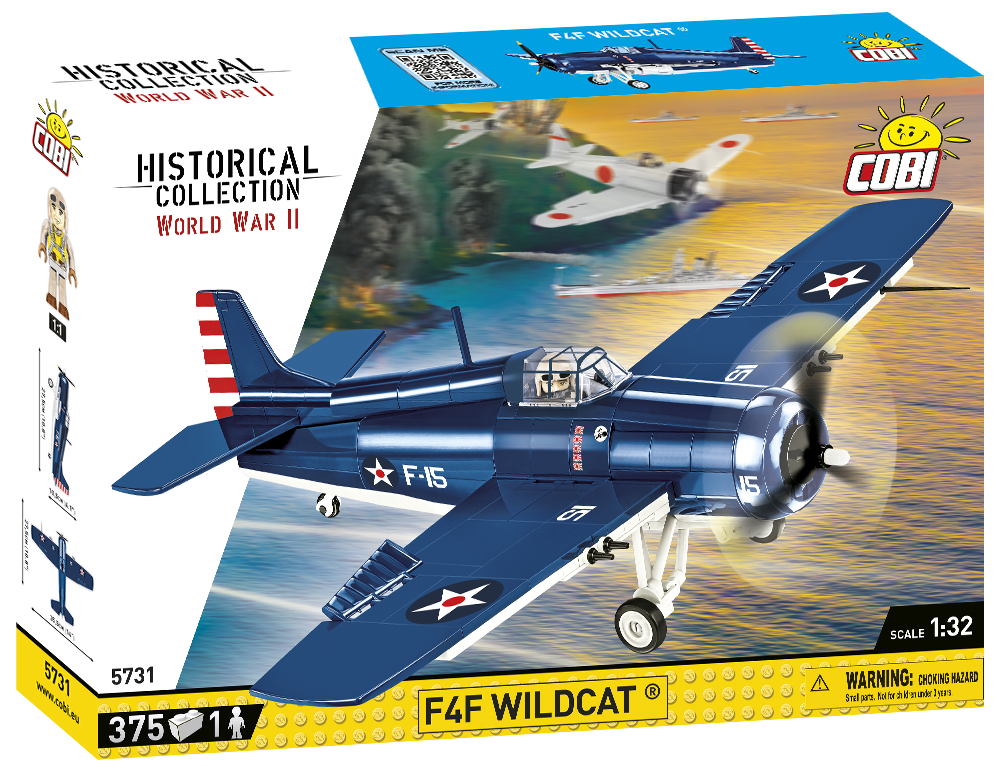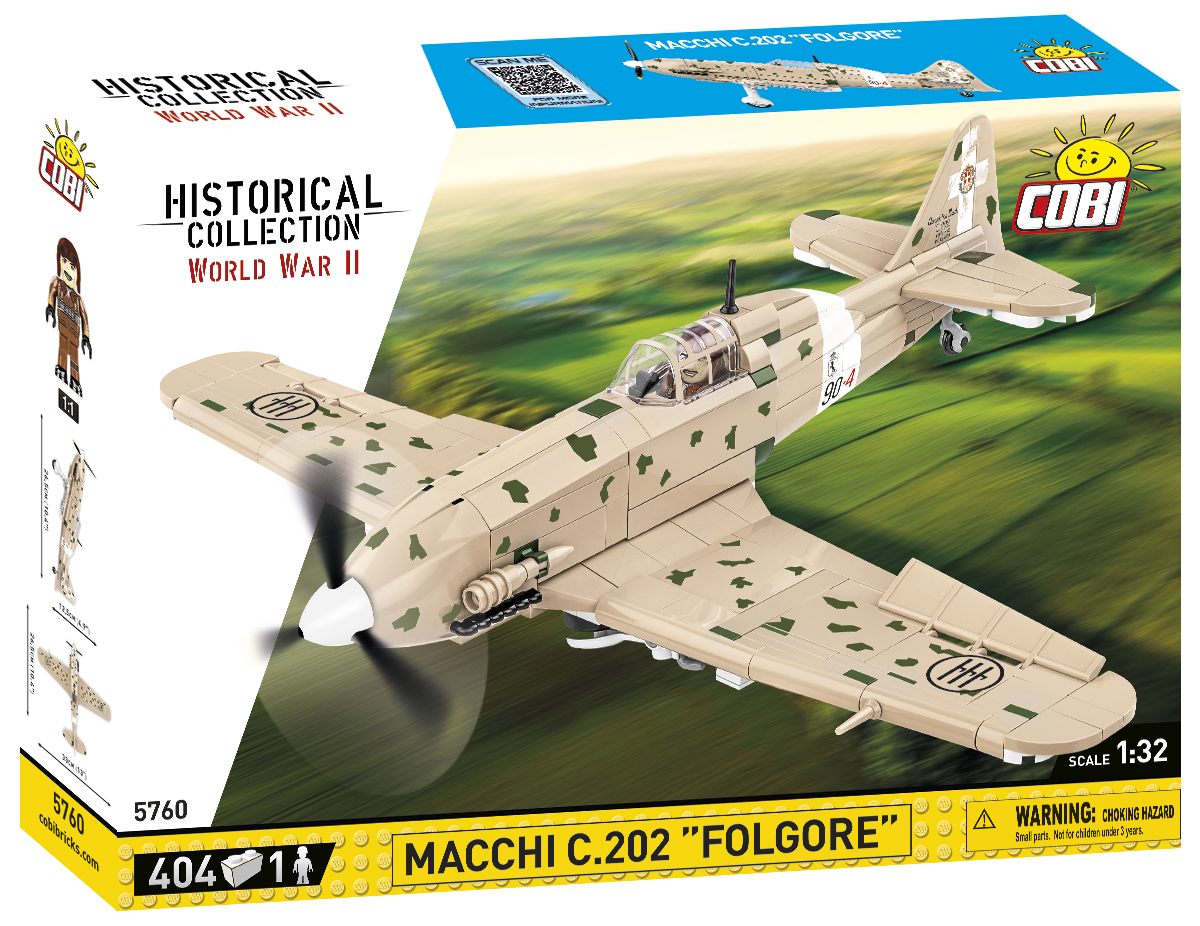COBI AVRO Lancaster B. III Bomber : Set #5759
*FREE SHIPPING AT $50 in the USA
Specifications:
Catalog no: COBI-5759
Scale: 1:48
Pieces: 1595
Figure(s): 1
Age: 10+
Dimensions (inches): 17.9” long, 25.4” wide, 5.1” high
The Avro Lancaster B Mk.I/III was a key element of the British bombing strategy during World War II. Its ability to carry large bomb loads, durability and versatility made it one of the most effective and versatile bombers used by the Allies. The new model has the markings of the Polish 300th Bomber Squadron "Ziemia Mazowiecka". Additionally, the model has movable propellers, retractable landing gear, opening bomb bay with block bombs, a block with the name of the set, a miniature reproduced interior and a figure of a Polish pilot from the 300th Bomber Squadron.
The Lancaster's design began with the Avro Manchester design, which was suffering from engine reliability problems. With the addition of two additional engines and other modifications, the Lancaster was born. The first Lancaster prototype (BT308) flew on 9 January 1941. The aircraft quickly proved superior to the Manchester and production of the Lancaster began the same year. The Mk.I was the first production version, powered by Rolls-Royce Merlin XX engines. The Mk.III differed from the Mk.I mainly in its Packard Merlin engines, which were produced under licence in the USA. The Lancaster entered operational service in February 1942 with No. 44 Squadron RAF. It quickly became the RAF's main bomber. Used primarily for night bombing, the Lancaster was key to many important bombing operations, including the bombing of Hamburg (Operation Gomorrah) and Dresden. Lancasters were used for various special missions, such as Operation Chastise (raids on dams), as well as for dropping heavy bombs, like the Grand Slam and Tallboy, which were capable of destroying heavily fortified targets.
300th Bomber Squadron "Ziemia Mazowiecka" was an important part of the Polish contribution to the Allied war effort during World War II. Its members fought with great sacrifice, and their courage and skill contributed to the RAF's successes in the bombing campaign against the Third Reich. The squadron remains a symbol of the Polish contribution to the fight for freedom and independence during one of the most difficult periods in history.
• 1595 high-quality elements
• Manufactured in the EU by a company with over 35 years of tradition
• The blocks meet the safety standards of products for children
• Fully compatible with other brands of construction blocks
• Blocks with prints do not scratch or smear and do not fade during play or under the influence of temperature
• Clear and intuitive instructions based on illustrations and step-by-step directions
• 1 figure
• A block with the name of the set
• Scale 1:48
Model dimensions (length x width): 45.5cm (17.9") x 64.5cm (25.4")
*FREE SHIPPING AT $50 in the USA
Specifications:
Catalog no: COBI-5759
Scale: 1:48
Pieces: 1595
Figure(s): 1
Age: 10+
Dimensions (inches): 17.9” long, 25.4” wide, 5.1” high
The Avro Lancaster B Mk.I/III was a key element of the British bombing strategy during World War II. Its ability to carry large bomb loads, durability and versatility made it one of the most effective and versatile bombers used by the Allies. The new model has the markings of the Polish 300th Bomber Squadron "Ziemia Mazowiecka". Additionally, the model has movable propellers, retractable landing gear, opening bomb bay with block bombs, a block with the name of the set, a miniature reproduced interior and a figure of a Polish pilot from the 300th Bomber Squadron.
The Lancaster's design began with the Avro Manchester design, which was suffering from engine reliability problems. With the addition of two additional engines and other modifications, the Lancaster was born. The first Lancaster prototype (BT308) flew on 9 January 1941. The aircraft quickly proved superior to the Manchester and production of the Lancaster began the same year. The Mk.I was the first production version, powered by Rolls-Royce Merlin XX engines. The Mk.III differed from the Mk.I mainly in its Packard Merlin engines, which were produced under licence in the USA. The Lancaster entered operational service in February 1942 with No. 44 Squadron RAF. It quickly became the RAF's main bomber. Used primarily for night bombing, the Lancaster was key to many important bombing operations, including the bombing of Hamburg (Operation Gomorrah) and Dresden. Lancasters were used for various special missions, such as Operation Chastise (raids on dams), as well as for dropping heavy bombs, like the Grand Slam and Tallboy, which were capable of destroying heavily fortified targets.
300th Bomber Squadron "Ziemia Mazowiecka" was an important part of the Polish contribution to the Allied war effort during World War II. Its members fought with great sacrifice, and their courage and skill contributed to the RAF's successes in the bombing campaign against the Third Reich. The squadron remains a symbol of the Polish contribution to the fight for freedom and independence during one of the most difficult periods in history.
• 1595 high-quality elements
• Manufactured in the EU by a company with over 35 years of tradition
• The blocks meet the safety standards of products for children
• Fully compatible with other brands of construction blocks
• Blocks with prints do not scratch or smear and do not fade during play or under the influence of temperature
• Clear and intuitive instructions based on illustrations and step-by-step directions
• 1 figure
• A block with the name of the set
• Scale 1:48
Model dimensions (length x width): 45.5cm (17.9") x 64.5cm (25.4")
*FREE SHIPPING AT $50 in the USA
Specifications:
Catalog no: COBI-5759
Scale: 1:48
Pieces: 1595
Figure(s): 1
Age: 10+
Dimensions (inches): 17.9” long, 25.4” wide, 5.1” high
The Avro Lancaster B Mk.I/III was a key element of the British bombing strategy during World War II. Its ability to carry large bomb loads, durability and versatility made it one of the most effective and versatile bombers used by the Allies. The new model has the markings of the Polish 300th Bomber Squadron "Ziemia Mazowiecka". Additionally, the model has movable propellers, retractable landing gear, opening bomb bay with block bombs, a block with the name of the set, a miniature reproduced interior and a figure of a Polish pilot from the 300th Bomber Squadron.
The Lancaster's design began with the Avro Manchester design, which was suffering from engine reliability problems. With the addition of two additional engines and other modifications, the Lancaster was born. The first Lancaster prototype (BT308) flew on 9 January 1941. The aircraft quickly proved superior to the Manchester and production of the Lancaster began the same year. The Mk.I was the first production version, powered by Rolls-Royce Merlin XX engines. The Mk.III differed from the Mk.I mainly in its Packard Merlin engines, which were produced under licence in the USA. The Lancaster entered operational service in February 1942 with No. 44 Squadron RAF. It quickly became the RAF's main bomber. Used primarily for night bombing, the Lancaster was key to many important bombing operations, including the bombing of Hamburg (Operation Gomorrah) and Dresden. Lancasters were used for various special missions, such as Operation Chastise (raids on dams), as well as for dropping heavy bombs, like the Grand Slam and Tallboy, which were capable of destroying heavily fortified targets.
300th Bomber Squadron "Ziemia Mazowiecka" was an important part of the Polish contribution to the Allied war effort during World War II. Its members fought with great sacrifice, and their courage and skill contributed to the RAF's successes in the bombing campaign against the Third Reich. The squadron remains a symbol of the Polish contribution to the fight for freedom and independence during one of the most difficult periods in history.
• 1595 high-quality elements
• Manufactured in the EU by a company with over 35 years of tradition
• The blocks meet the safety standards of products for children
• Fully compatible with other brands of construction blocks
• Blocks with prints do not scratch or smear and do not fade during play or under the influence of temperature
• Clear and intuitive instructions based on illustrations and step-by-step directions
• 1 figure
• A block with the name of the set
• Scale 1:48
Model dimensions (length x width): 45.5cm (17.9") x 64.5cm (25.4")



